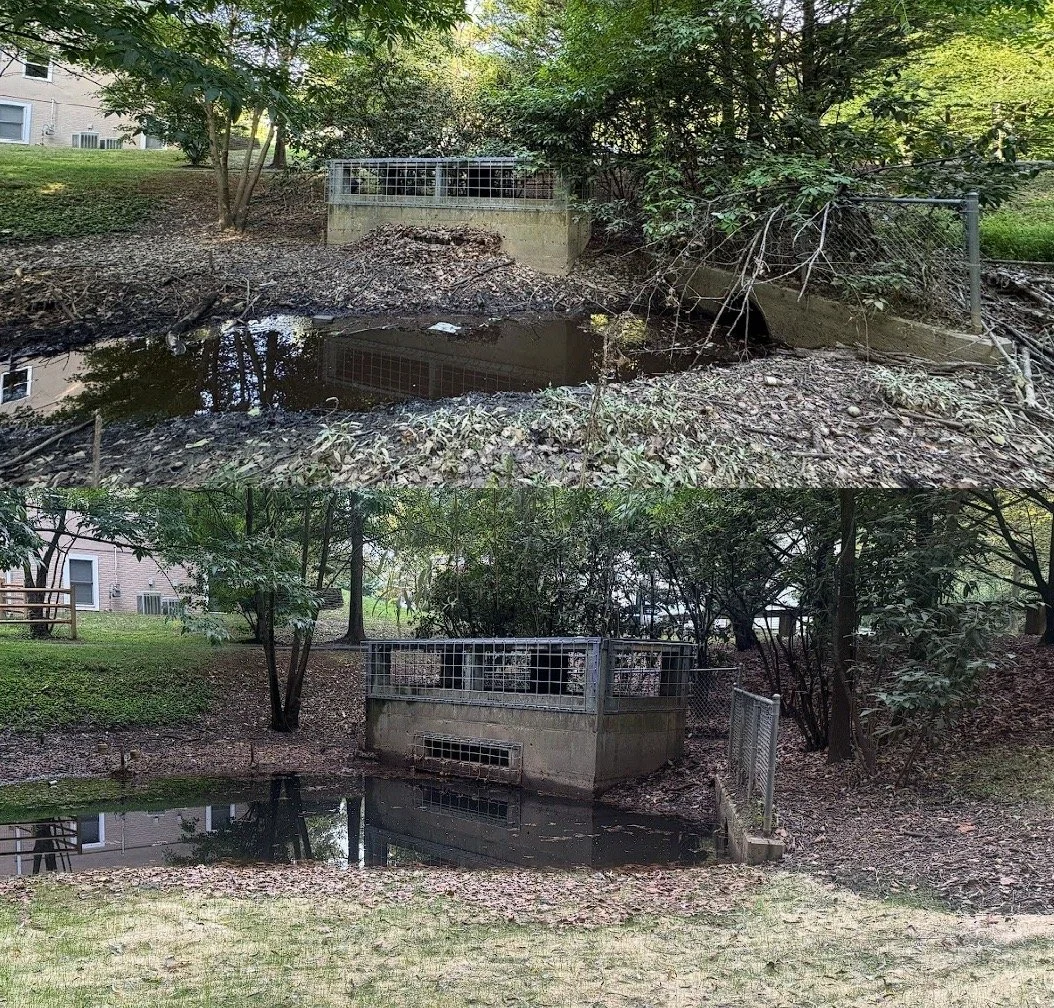What Is a Low Flow Outlet and Why Is It Important to Keep It Clear of Debris?
Stormwater management systems are designed to handle runoff effectively, protect property, and maintain water quality. One of the most critical components in many of these systems is the low flow outlet, a feature that often goes unnoticed until something goes wrong.
Low flow outlets play a vital role in managing smaller, frequent storms and ensuring stormwater facilities operate efficiently. In this article, we’ll explain what a low flow outlet is, its purpose, and why keeping it clear of debris is essential for maintaining your stormwater system’s functionality.
What Is a Low Flow Outlet?
A low flow outlet is a component of a stormwater management facility, typically located in retention ponds, detention basins, or other above-ground systems. It is a small opening, often part of a larger outlet structure, designed to release water slowly and steadily during normal or low-flow conditions.
The low flow outlet works alongside other outlet structures, such as emergency spillways, to manage water levels during both routine and extreme weather events.
The Purpose of a Low Flow Outlet
1. Managing Base Flow
The low flow outlet ensures that water from smaller, more frequent rainfall events is drained gradually. This helps maintain the facility’s water level within its designed capacity, preventing overflow during heavier storms.
2. Improving Water Quality
By releasing water slowly, the low flow outlet allows sediment, debris, and pollutants to settle at the bottom of the pond or basin. This reduces the amount of contaminants entering downstream waterways and improves overall water quality.
3. Reducing Erosion
A steady, controlled release of water minimizes the risk of soil erosion around the outlet and downstream areas. This helps preserve the stability of the pond embankment and nearby streambanks.
4. Maintaining Vegetation and Habitat
Proper water levels supported by the low flow outlet help sustain aquatic plants and wildlife habitats in and around the stormwater facility.
Why Keeping the Low Flow Outlet Clear of Debris Is Essential
1. Prevents Blockages
Debris such as leaves, sediment, and trash can easily clog the low flow outlet, preventing water from draining properly. This can lead to:
• Water backing up into the facility, reducing its storage capacity.
• Overflow during storms, increasing the risk of flooding.
2. Ensures System Efficiency
A clear low flow outlet allows the stormwater facility to function as designed, managing both routine and extreme runoff events effectively.
3. Protects Water Quality
When a low flow outlet is blocked, pollutants can build up in the facility, eventually being released in concentrated amounts during heavy rainfall. Keeping the outlet clear ensures consistent filtration and improves water quality downstream.
4. Prevents Structural Damage
Standing water caused by a clogged outlet can erode embankments, weaken the facility’s structure, and create costly repair needs over time.
5. Avoids Regulatory Issues
In many areas, including Maryland, stormwater facilities must meet strict maintenance and inspection standards. A clogged low flow outlet can result in non-compliance, fines, or corrective action orders from regulatory agencies.
How to Keep Low Flow Outlets Clear of Debris
1. Regular Inspections
Inspect the low flow outlet frequently, especially after heavy rainfall or during periods of seasonal leaf drop. Look for signs of blockages, damage, or sediment buildup.
2. Routine Maintenance
Schedule routine maintenance to remove debris, sediment, and vegetation that may obstruct the outlet. This ensures the outlet remains functional year-round.
3. Install Trash Racks or Screens
Trash racks or screens can be installed over the outlet to prevent large debris from entering. These devices make maintenance easier and reduce the risk of clogs.
4. Partner with Professionals
A stormwater management company like Patriot Natural Resources can provide specialized services, including inspections, debris removal, and outlet maintenance, to ensure your system operates efficiently and remains compliant with local regulations.
The Role of Low Flow Outlets in Stormwater System Health
Low flow outlets may be small, but their importance cannot be overstated. They are critical to the overall performance of stormwater facilities, ensuring that water is managed effectively and environmental impacts are minimized. Regular maintenance and debris removal not only protect the outlet itself but also safeguard the surrounding property and ecosystem.
How Patriot Natural Resources Can Help
At Patriot Natural Resources, we understand the critical role that low flow outlets play in stormwater management. Our team provides:
• Regular inspections to identify blockages or damage.
• Routine maintenance to keep outlets clear of debris and functioning properly.
• Compliance support to meet Maryland’s stormwater regulations.
Contact us today to learn how we can help you maintain your stormwater system and ensure your low flow outlet operates as intended.

